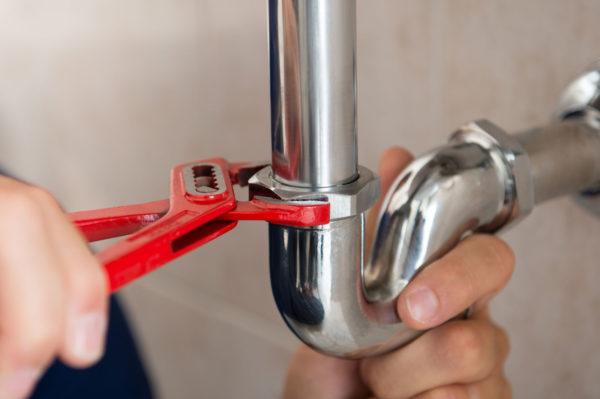What are your thoughts about Plumbing basics: How your home plumbing works?

Plumbing is an important facet of any home, in charge of providing tidy water for drinking, food preparation, and bathing, as well as getting rid of wastewater securely. Recognizing the basics of home plumbing is vital for every single home owner to make sure correct upkeep, troubleshooting, and, if necessary, repair services. In this newbie's guide, we'll cover the essential ideas of home plumbing to help you come to be much more acquainted with just how it functions.
Water Heating Unit
The water heating unit is accountable for heating water for domestic usage, including bathing, cooking, and cleaning. Usual kinds of hot water heater include tank-type hot water heater, tankless (on-demand) hot water heater, and heat pump hot water heater. The water heater is linked to the water supply system and delivers hot water to plumbing fixtures as required.
Water drainage System
The drainage system removes wastewater from your home and lugs it away to a sewer treatment facility or septic system. It consists of a network of pipelines, fittings, and fixtures that carry wastewater from plumbing components to the major sewer line or sewage-disposal tank. Appropriate drain is important to avoid obstructions, back-ups, and sewer leakages.
Air flow System
The air flow system assists preserve appropriate atmospheric pressure and prevent sewer gases from entering your home. Vent pipes, additionally called air vent heaps, prolong from plumbing fixtures to the roofing system, allowing sewer gases to escape securely outside. Air flow pipelines likewise allow air to get in the water drainage system, helping with smooth wastewater flow and preventing suction or vacuum impacts.
Water System System
The supply of water system brings clean water right into your home from a local water source or an exclusive well. It contains a major water line that links to your home's plumbing system, normally situated underground. A water meter measures the quantity of water taken in, while a shut-off valve permits you to control the circulation of water into your home.
Plumbing Fixtures
Plumbing fixtures are gadgets that deliver water to various parts of your home and consist of sinks, faucets, commodes, showers, tubs, and devices such as dishwashing machines and cleaning equipments. Each component is linked to the supply of water system using pipes and fittings and may have its shut-off valve for maintenance or emergencies.
Common Plumbing Tools
Having the right devices accessible is necessary for carrying out fundamental plumbing fixings and maintenance jobs. Typical plumbing tools include flexible wrenches, monkey wrench, pliers, pipeline cutters, hacksaws, bettors, augers (or drainpipe serpents), and Teflon tape. Having these devices easily offered can help you take on minor plumbing problems efficiently.
Fundamental Plumbing Repairs
While some plumbing repair services may call for professional help, many typical concerns can be addressed with fundamental do it yourself techniques. Knowing just how to repair a leaking tap, unblock a drain, replace a bathroom flapper, or fix a dripping showerhead can conserve you money and time on plumbing fixings.
Conclusion
Comprehending the fundamentals of home plumbing is important for each home owner to maintain a safe, functional, and efficient plumbing system. By familiarizing yourself with the water system system, plumbing components, water drainage system, air flow system, common plumbing tools, and basic fixings, you can with confidence resolve small plumbing concerns and guarantee your home's plumbing system runs efficiently.
Understanding Basics of Home Plumbing System: A Beginner's Guide
The Main Components of Your Home Plumbing System
The Water Supply System
This system is responsible for transporting fresh water into your home. It usually has a main water line that splits into two branches: one directed towards cold water services and the other connected to a water heater for hot water. The pressure is key here; it ensures water reaches all parts of your house.
The Drainage System
Once water has been used, it becomes wastewater that needs to be removed from your home. This is where the drainage system comes into play. It includes all the pipes that carry wastewater and sewage away from your house to sewage treatment facilities or septic tanks.
The Vent System
The vent system prevents sewer gases from entering your home and helps maintain the pressure balance that allows wastewater to flow out properly. These vents usually exit through the roof of your house.
Water Heating System
For those who enjoy hot showers or using hot water for cleaning, the water heater is a crucial part of the plumbing system. It can be a tankless system, which heats water on demand, or a traditional water tank model.
Common Plumbing Problems and Basic Troubleshooting
Plumbing systems, while designed to be durable, can face issues like clogged drains, leaky faucets, or low water pressure. Here are some basic troubleshooting tips:
Clogged Drains
Use a plunger or a plumber's snake to try and dislodge whatever is blocking the drain. Regular cleaning can prevent clogs.
Leaky Faucets
Often caused by worn-out washers or gaskets, these can usually be replaced by someone with basic DIY skills.
Low Water Pressure
This might be due to sediment build-up in your fixtures or a leak somewhere in your water line. Cleaning out aerators or seeking a professional to detect leaks might be necessary.
Preventive Maintenance Tips
Maintaining your plumbing system is key to avoiding emergencies. Regularly check for leaks, avoid disposing of grease down the sink, and have your system inspected by a professional plumber at least once a year.

Do you really like more info about ? Put a review directly below. We'd be glad to hear your thinking about this review. In hopes that you visit us again soon. You should pause to share this blog if you enjoyed reading it. Thanks a lot for taking the time to read it.
Call